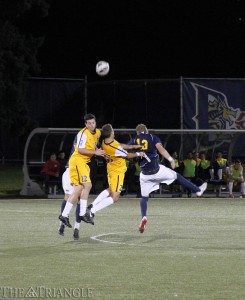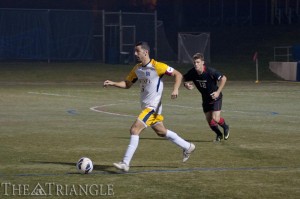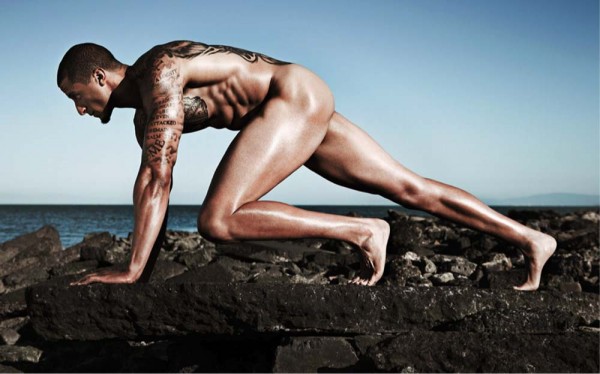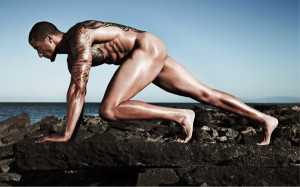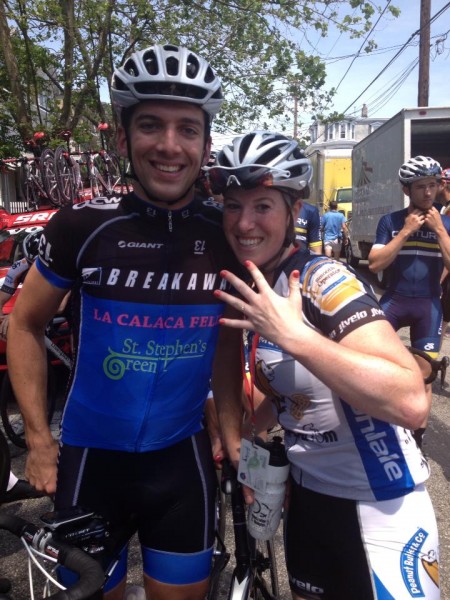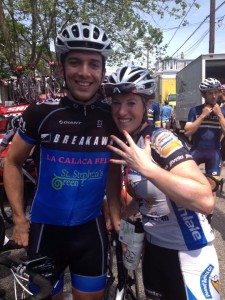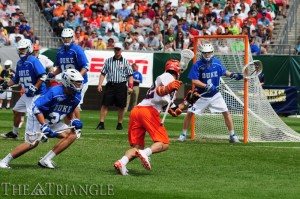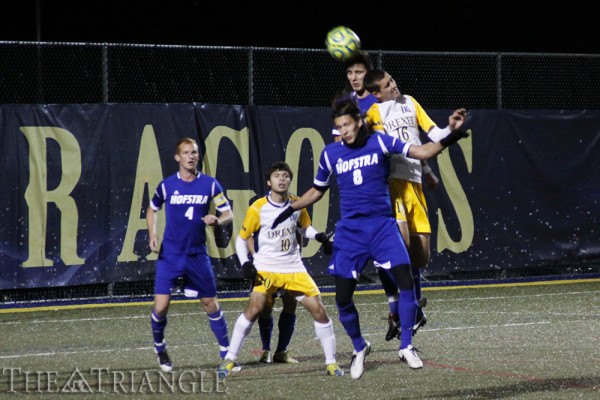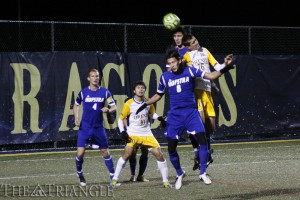
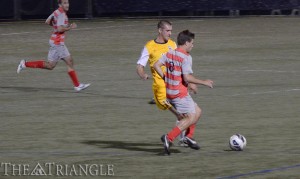
[media-credit name=”Ren Raun” align=”alignleft” width=”300″] Senior midfielder Ken Tribbett pressures a Rutgers University player during Drexel’s 2-0 victory over the Scarlet Knights. Tribbett scored his second goal of the season to ice the match.
The Drexel men’s soccer team frequently used the adjective “quality” this past week when describing the team’s upcoming opponent, Rutgers University. But when the Scarlet Knights stepped onto Vidas Field Sept. 24, it was easy to see which team truly showed its quality: the Dragons.
With goals from senior midfielders Nathan Page and Ken Tribbett in the second half, Drexel put forth a team effort in a 2-0 victory over Rutgers. Freshman goalkeeper Tyler Afflerbach posted his third clean sheet in four career starts as the Dragon defense limited the Scarlet Knights to only two shots on goal.
“Any time you get a team with the quality of Rutgers … it’s easy to get up for [a game like] that,” head coach Doug Hess said. “Hats off to those guys. They didn’t make it easy; it was a very tight game.”
Each team had a few chances early on. Rutgers freshman goalkeeper David Greczek made simple saves on shots by senior midfielder Michele Pataia in the 15th minute and Page in the 24th minute. Sandwiched between those shots was a great opportunity by the Scarlet Knights, but Afflerbach made a save on a header from sophomore defender Mitchell Taintor in the 18th minute.
There was nearly a major momentum swing late in the half. Page missed the net wide-left on a one-on-one rush in the 36th minute, and then Rutgers sophomore midfielder Mael Corboz glanced a free kick off the top off the crossbar after a yellow card was given to Drexel senior defender Skylar Olson.
Still, the ball stayed out of the net, and the two teams went into halftime in a scoreless tie.
“You have to be able to adapt as the game plays,” Hess pointed out. “That’s the funny thing about soccer; you don’t get any time to adjust other than halftime. So [you’ve got to] be able to think and figure it out as the game goes.”
Coming out of the half, the Dragons looked poised to reward the packed crowd with a goal, or perhaps two. As it turned out, it took only about half an hour to reach that actualization.
“We had trouble getting it through our heads that we had to break the pressure fast or play over the pressure,” Hess said. “The couple of moments that we did, we found two goals out of it, out of nothing.”
In the 53rd minute, Pataia chipped the ball in to rushing senior forward Mark Donohue, who came into the match as a substitution in the first half. Greczek stoned Donohue’s original shot on goal, but that left the Scarlet Knight keeper out of position. The juicy rebound came out to Page, who deposited it into the back of the net for his third goal of the season, all coming in the last three matches.
Then Tribbett, who was a force all over the field for Drexel all night, cashed in right on the doorstep. Page played a give-and-go with freshman midfielder Adam Arana, who fed a shot that trickled through the Rutgers back line. As the ball rolled toward a wide-open cage, Tribbett tapped it in just inches from going over the goal line on its own.
“If I didn’t touch it, it was going in,” Tribbett admitted after the match. “But that’s what a senior does to a freshman.”
That put the Dragons up two goals with just over 21 minutes to go in the match, a lead they would not relinquish, as the home team clinched a 2-0 victory over the Scarlet Knights. The win extended their winning streak to four and the overall team record to 4-2-1. It also marked Drexel’s first victory against Rutgers since 1980.
“Usually Drexel — pfft, no one cares about Drexel,” Tribbett said. “Now that we’ve established ourselves, we’re able to get quality opponents to come in here. We keep winning, so fans better come out and support us.”
As the final 20 minutes ticked away, many of those in attendance filed out, most likely to catch an early trip back to campus on the Drexel shuttle. But all in all, the team was satisfied with the support shown by the Dragon faithful during the first week of classes.
“We had a great crowd tonight. … Hopefully it’s one of those things that we can keep building our student support here,” Hess said. “We [have] a good team, [and] we’re finding a bit of our rhythm now. Hopefully they’ll come out and watch us.”
Drexel hosts its second consecutive match Sept. 28 at 4 p.m. when Colonial Athletic Association play begins against The College of William & Mary. The Tribe is one of the hottest teams in the country right now, as their last three wins have been against ranked opponents. Two of those, Creighton University and the University of North Carolina, were both No. 1 in the country at the time.
Last season, the Dragons ended a four-match losing streak against William & Mary with a 3-0 victory. Drexel got goals from Page, midfielder John Grosh and forward Guido Pena, while former goalkeeper Tim Washam recorded six saves to post a shutout.
This time around, each team is coming into the match with a 4-2-1 record and a winning streak. Certainly, both the Dragons and the Tribe will want to record a “quality” victory to begin their respective CAA schedules.
The post M. soccer shows ‘quality’ with 2-0 win over Rutgers appeared first on The Triangle.

